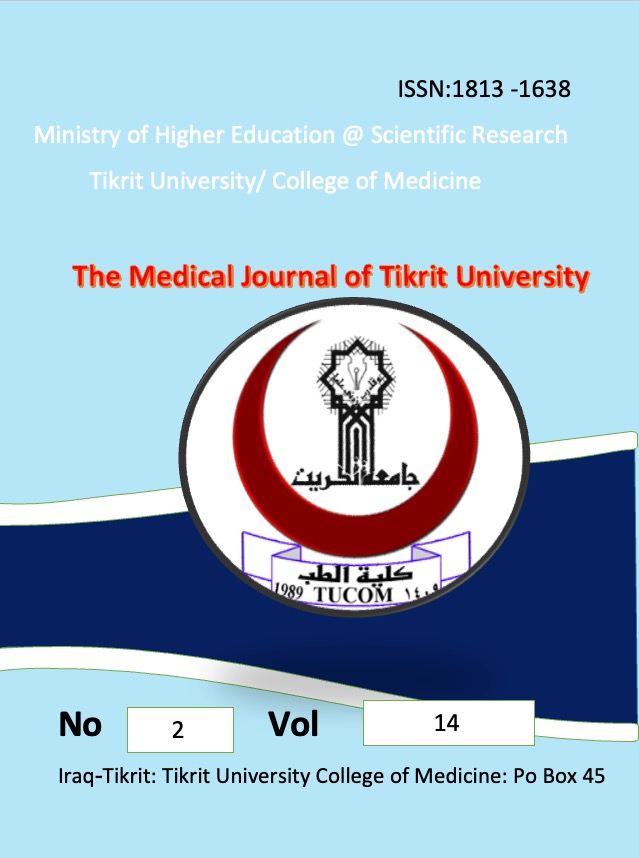Clinicopathological analysis of ovarian cysts in Tikrit
Keywords:
ovarian cyst, risk factors, functional, neoplastic.Abstract
The ovary is normally a cystic structure and the risk of its developing a malignancy is low. The general surgeons and gynecologists that do laparotomy may remove the ovarian cyst with the hope that a pathological process will be found to justify the symptoms, signs and surgery indications. A case control study was carried out in obstetrics and gynecology epartment at Tikrit Teaching Hospital, through the period of June — 2004 to December — 2007, to identify the types of surgically removed ovarian cysts in the hospital and verifying the risk factors, clinical presentation and pathological diagnosis of these cysts. A total of 166 patients with ovarian cysts in the group I(cyst group) and 50 women in the group 2 (control group) are enrolled in the study, and a structural questionnaire was administered to each woman with ages 11—74 years. Functional ovarian cyst occurs in n=70 patients {corpus luteum cyst n=40 patients (22.2%) and follicular cyst n=30 patients (16.6%)}, while benign epithelial tumors are n=45 patients {Serous n=31 patients (17.2%) and mucinous n=14 patients (7.8%)}. However, dermoid cyst was found in n=29 patients (16.1 %), endometriosis in n=21 patients (11.7%), and fibroma in n=3 patients (1.7%). Yet, mucinous cyst adenocarcinoma, thecoma, infectious cysts and ovarian ectopic pregnancy are found in n=2 patients (1.1%) respectively. Nevertheless, serous cyst adenocarcinoma, granulosa cell tumor, and malignant transformation of mature cystic teratoma have been seen in 1 patient (0.6 %) for each tumor. Single female, nulliparity, low parity and infertility were associated with ovarian cysts. Blood group A+ was the most blood group that is associated with them n= 57 patients (34.4 %). Fatty diet and salty diet are also associated with them, but these results were not significant except for caffeine use. Smoking appears to be not a risk factor in this study because it is not acceptable for female in our society. The size of each tumor or cyst and the complication of it such as torsion and rupture would be related to its type.





